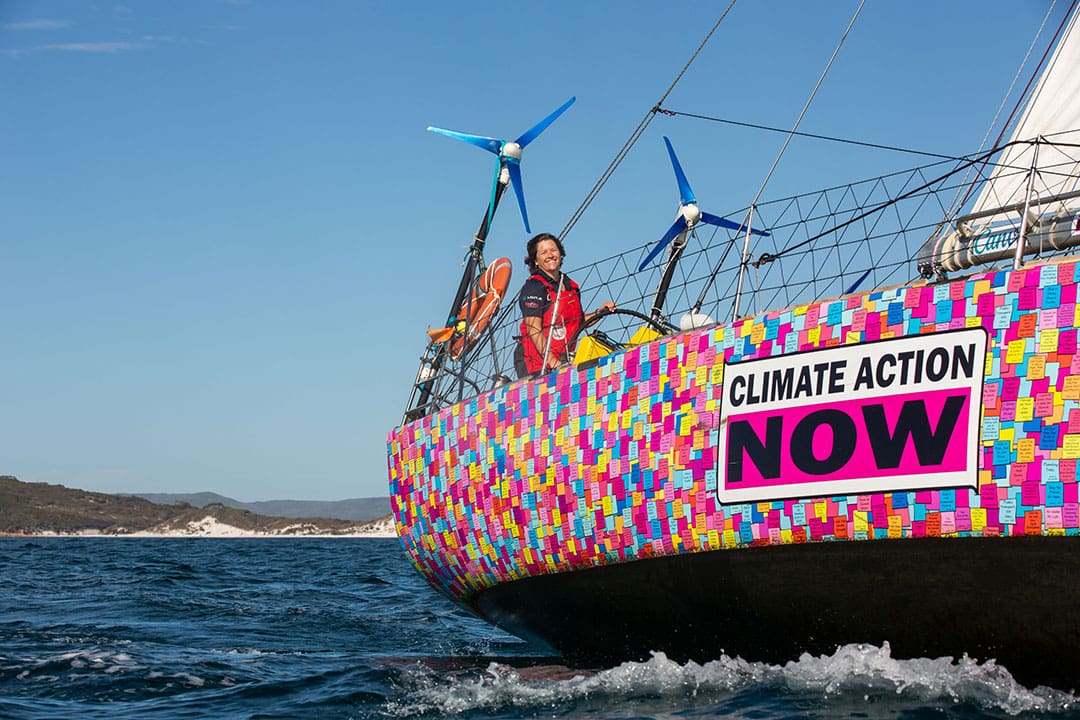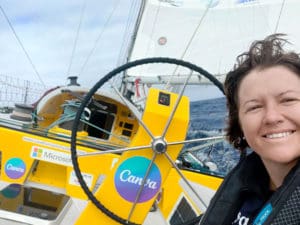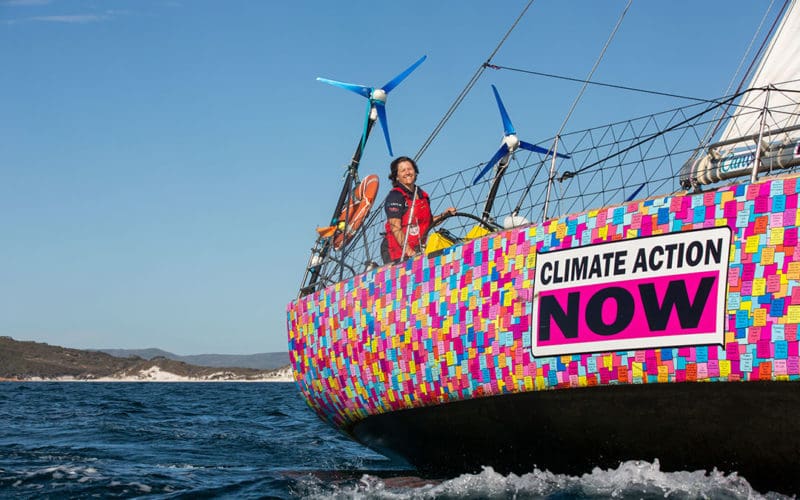
Australian sailor Lisa Blair crossed her outbound track on May 19, 2022, to complete a solo unassisted non-stop circumnavigation of Antarctica, going into the history books for sailing it all below 45 degrees south latitude. Her circumnavigation took 87 days but Lisa is still racing on the Antarctica Cup Ocean Race track and if she arrives back in Albany, Western Australia, by June 2 she will have defeated Fedor Konyukhov’s 2008 time of 102 days port to port to set a new speed record.

Lisa’s boat, Climate Action Now, is a Hick 50, designed by Robert Hick and built by Hick Marine with fiberglass in Australia. Blair sailed Climate Action Now in a prior 2017 circumnavigation of Antarctica during which she suffered a dismasting and had to put into Cape Town, South Africa for repairs, cutting off her hopes for a non-stop voyage. Between her two Antarctic voyages she was the first woman to sail solo, non-stop and unassisted around Australia, establishing a new record time of 58 days, 2 hours, 25 minutes and 29 seconds. In 2019, Lisa once again made history in the first double-handed female team in the history of the race to compete in the ORCV Melbourne to Hobart Yacht Race.
Konyukhov was the first to enter the Antarctica Cup Ocean Race on the Antarctica Cup Racetrack, a 14,000-mile track traversing the Southern Ocean. It’s open to monohull and multihull ocean racing boats, crewed and solo, to set the World Sailing Speed Record around the racetrack and the only inter-ocean yacht race based in the Southern Hemisphere. The course is flexible but must be completed between 45 degrees and 60 degrees south.
Climate Action Now’s unusually colorful hull is wrapped in a collage of post-it notes from supporters suggesting person-sized actions that if taken can make a difference to the climate. Partnering with the Clean Ocean Foundation and working with scientific organizations, Lisa took readings to assist with global weather modeling and with mapping the seafloor. She released her last Australian Bureau of Meteorology weather drifter buoy hours before she crossed her track. Along with her sponsors, which include Canva (an online design and publishing tool) and many small contributors that sponsored a degree of longitude in her campaign, the overall picture is of a sailor who is navigating the human world in a new and different way.
Perhaps this is not surprising, given that, like Tracy Edwards who in 1989 skippered the first all-female crew in the Whitbread Round the World Yacht Race but started as a cook for an all-male team, Lisa began her sailing career as a hostess on a sailboat in the Whitsundays while still a university student in 2005. These women did not have the advantage of growing up sailing or have the connections that attract attention and support from the wider boating industry to boost them into the sailing history books.

